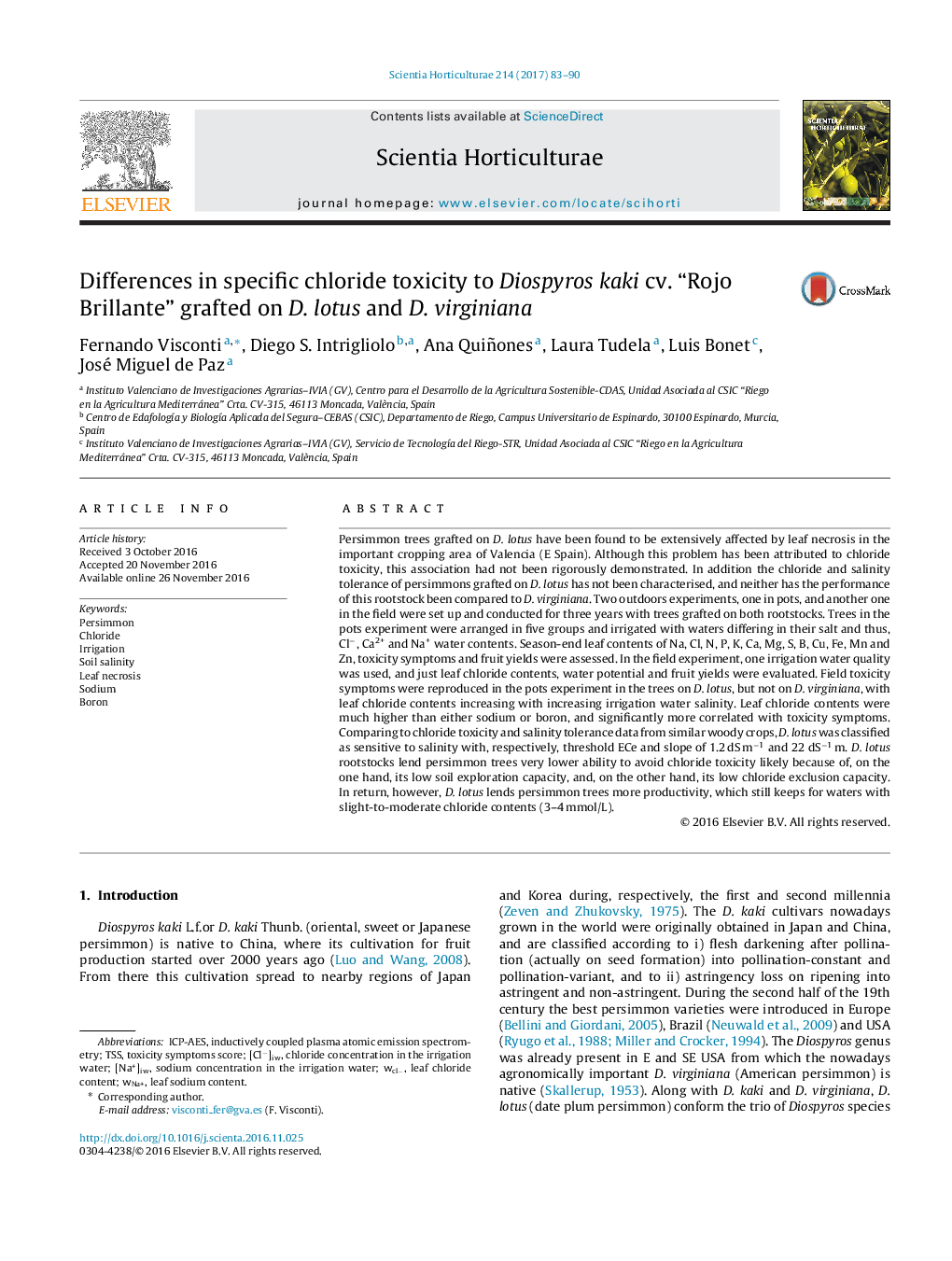| کد مقاله | کد نشریه | سال انتشار | مقاله انگلیسی | نسخه تمام متن |
|---|---|---|---|---|
| 5769796 | 1628784 | 2017 | 8 صفحه PDF | دانلود رایگان |

- Leaf necrosis on “Rojo Brillante” persimmon is caused by irrigation water chloride.
- D. virginiana rootstocks lend persimmon higher chloride tolerance than D. lotus.
- Both root morphology and physiology may explain this tolerance boost.
- Estimated tolerance parameters for persimmon on D. lotus are 1.2Â dSÂ mâ1 and 22.
- Persimmon is still more productive on D. lotus than on D. virginiana for moderate Clâ.
Persimmon trees grafted on D. lotus have been found to be extensively affected by leaf necrosis in the important cropping area of Valencia (E Spain). Although this problem has been attributed to chloride toxicity, this association had not been rigorously demonstrated. In addition the chloride and salinity tolerance of persimmons grafted on D. lotus has not been characterised, and neither has the performance of this rootstock been compared to D. virginiana. Two outdoors experiments, one in pots, and another one in the field were set up and conducted for three years with trees grafted on both rootstocks. Trees in the pots experiment were arranged in five groups and irrigated with waters differing in their salt and thus, Clâ, Ca2+ and Na+ water contents. Season-end leaf contents of Na, Cl, N, P, K, Ca, Mg, S, B, Cu, Fe, Mn and Zn, toxicity symptoms and fruit yields were assessed. In the field experiment, one irrigation water quality was used, and just leaf chloride contents, water potential and fruit yields were evaluated. Field toxicity symptoms were reproduced in the pots experiment in the trees on D. lotus, but not on D. virginiana, with leaf chloride contents increasing with increasing irrigation water salinity. Leaf chloride contents were much higher than either sodium or boron, and significantly more correlated with toxicity symptoms. Comparing to chloride toxicity and salinity tolerance data from similar woody crops, D. lotus was classified as sensitive to salinity with, respectively, threshold ECe and slope of 1.2Â dSÂ mâ1 and 22 dSâ1Â m. D. lotus rootstocks lend persimmon trees very lower ability to avoid chloride toxicity likely because of, on the one hand, its low soil exploration capacity, and, on the other hand, its low chloride exclusion capacity. In return, however, D. lotus lends persimmon trees more productivity, which still keeps for waters with slight-to-moderate chloride contents (3-4Â mmol/L).
Journal: Scientia Horticulturae - Volume 214, 5 January 2017, Pages 83-90